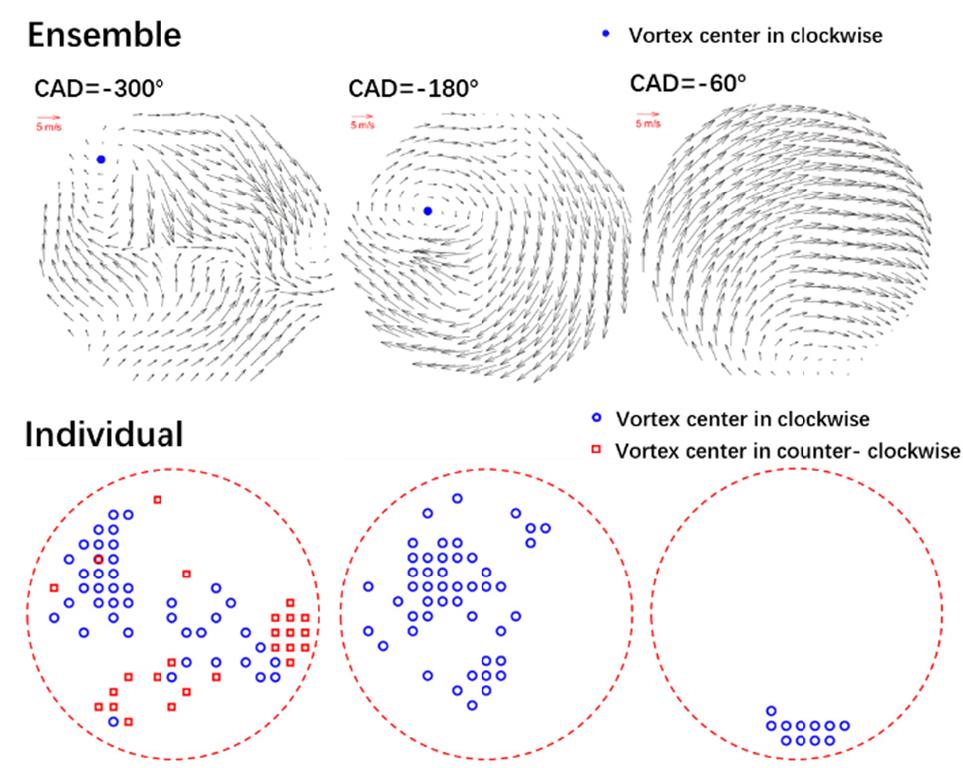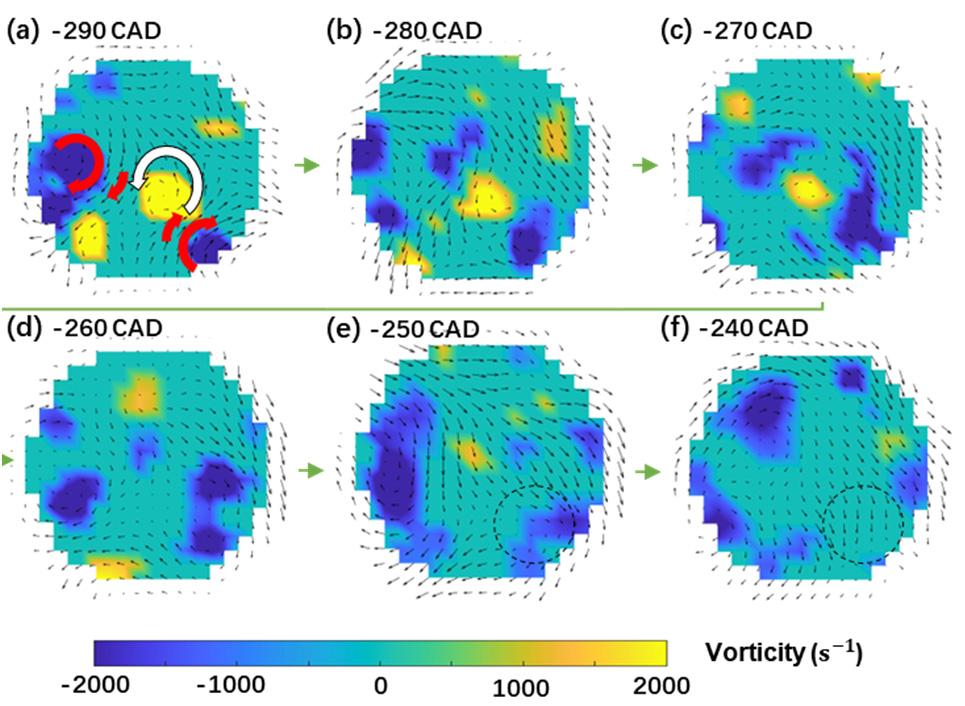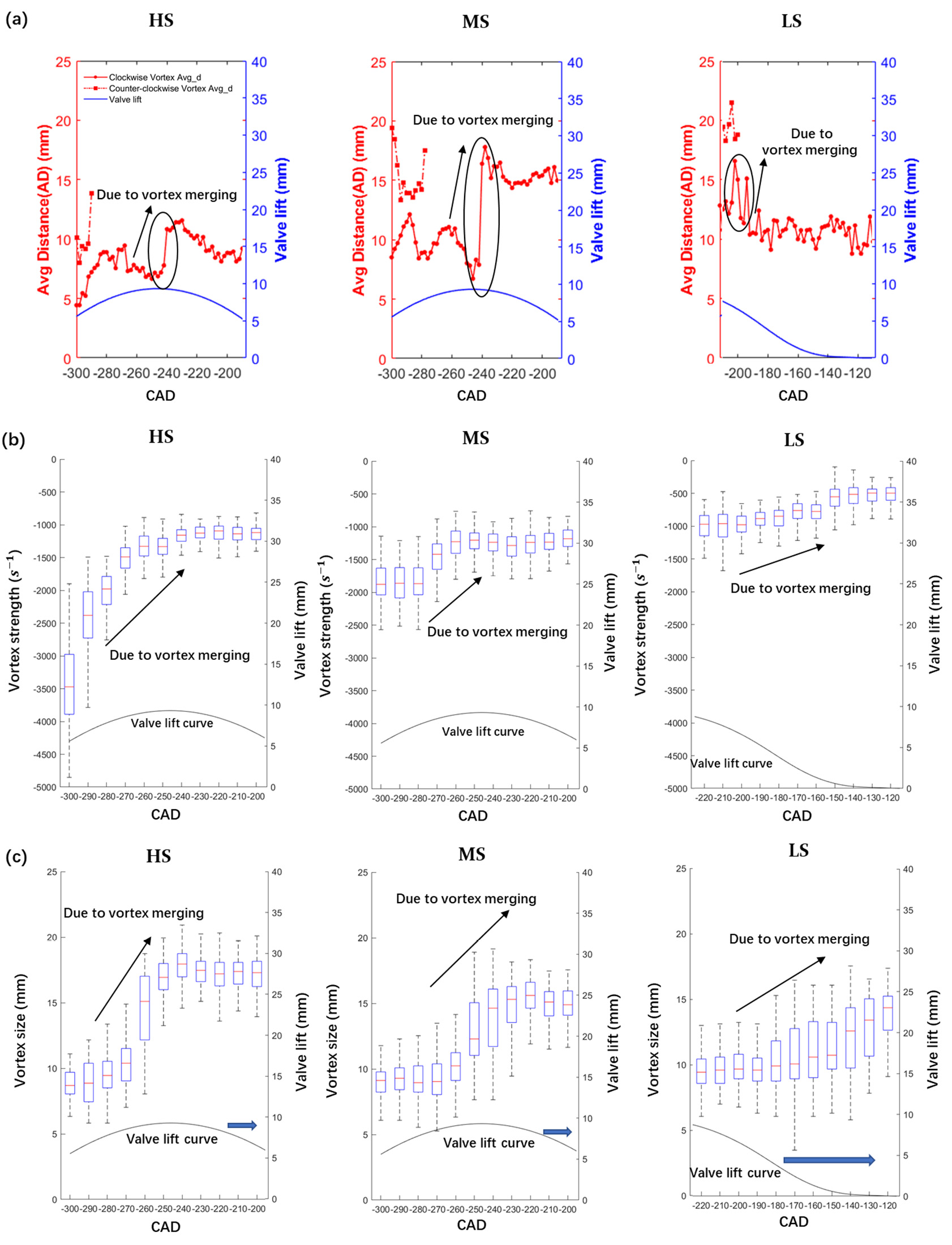Paper:Cyclic Analysis of In-Cylinder Vortex Interactions Based on Data-Driven Detection and Characterization Framework
The paper is now available online at 10.1115/1.4063281
Paper Info
Date: September 2023
DOI: 10.1115/1.4063281
Journal: J. Eng. Gas Turbines Power. Oct 2023, 145(10): 101011 (10 pages)
Authors: Fengnian Zhao, Ziming Zhou, David L.S. Hung*
Main Content
Research Background:
Today, automobiles have become an indispensable part of people’s lives. However, the emissions from automobile exhaust have severe impacts on the environment and human health. Therefore, researching how to improve engine combustion efficiency and reduce exhaust emissions has become a hot topic in the current research field. However, due to the strong periodic variations within the engine, understanding the vortex interaction processes to enhance combustion efficiency and reduce exhaust emissions has been a challenging issue for researchers.

Research Content:
In this study, researchers employed high-speed time-resolved particle image velocimetry (PIV) techniques to record the spatial-temporal flow behavior under three different swirl ratios. Subsequently, a vortex detection and characterization framework were implemented using both physical and data-driven methods to elucidate the vortex interaction processes. The results indicated that the vortex interaction processes under different swirl ratio conditions exhibited distinct characteristics. Researchers further analyzed the impact of vortex interaction on flow characteristics over a single cycle, examining vortex features such as position, intensity, and size using data-driven unsupervised clustering methods. The findings revealed that vortex merging is the primary cause of changes in vortex features. Additionally, researchers discovered that the occurrence and duration of vortex merging processes are closely related to the intake swirl ratio and the valve lift curve. Increasing the swirl ratio and valve lift led to earlier vortex merging and reduced merging time, providing a potential approach to mitigate periodic variations by controlling vortex merging.

Research Significance:
This study introduces a novel approach to unveil the intricate vortex interaction processes within the engine. The innovation lies in the use of both physical and data-driven methods to reveal details of periodic vortex interaction processes. Furthermore, the study identifies vortex merging as the main cause of changes in vortex features and suggests a potential strategy for alleviating periodic variations by controlling the vortex merging process. These findings hold significant implications for improving engine combustion efficiency and reducing exhaust emissions.
